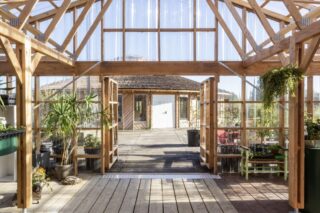We roamed the bustling halls of Salone del Mobile 2025 in Milan to discover the latest innovations in design, with a spotlight on sustainability and eco-responsibility.
9-13 April—Milan hosted the 63rd edition of the Salone del Mobile and the biennial Euroluce. The event lit up Fiera Milano Rho with designs that don’t just catch the eye but resonate with purpose, underscoring that aesthetics and eco-consciousness can coexist.
Our journey through the fair led us to three innovations by Cantori, Les Jardins, and Arper that confirm eco-design is no longer a trend, it’s a mandate. Why are design powerhouses and newcomers alike betting on sustainability? Because the future demands it, and the fair showed us how it’s done. Circular economy principles, a steady undercurrent for years, surged to new prominence—not as a pivot, but as a natural evolution—, with designers slashing waste, embracing recycled materials, and building for longevity.
We were particularly impressed by these products’ dedication to environmental stewardship and their innovative use of materials. Cantori‘s Oasi Cabinet integrates air-purifying technology with elegant design, creating a true oasis for the home. Les Jardins‘ Cadix Solar Lamp offers intelligent, customizable outdoor lighting powered by renewable energy and using repairable solar tech. Arper’s BREATHAIR®, an innovative, fully recyclable cushion material, transforms the Catifa (RE) 46 Chair, complementing its 100% recycled plastic shell with clear comfort. Each tells a story of technical ingenuity meeting environmental urgency. Let’s take a closer look.
Oasi Cabinet: Purifying Homes with Biotech
Since 1976, Cantori has defined Italian craftsmanship from its Marche-region roots. At Salone del Mobile 2025, their Oasi Cabinet, designed by Maurizio Manzoni, emerged as a beacon of eco-innovation, embodying “furniture that cares for those who live with it.”
The Oasi Cabinet is the result of a collaboration between Cantori and Aura System, an Italian startup specializing in environmental biotechnology. This version of the cabinet purifies the air, captures CO₂, and cools the atmosphere. How? By integrating the Aura system at the heart of the Oasi Cabinet. The system is the startup’s breathing green wall that purifies the air and enhances mood and well-being. They adapted the system to fit the Oasi Cabinet.
An engineered fan system draws in used air and forces it through the patented Aura Mix substrate, which captures harmful substances.
The pollutants are then absorbed by the roots of the plants within the substrate, and clean, “naturalized” air is released back into the environment.
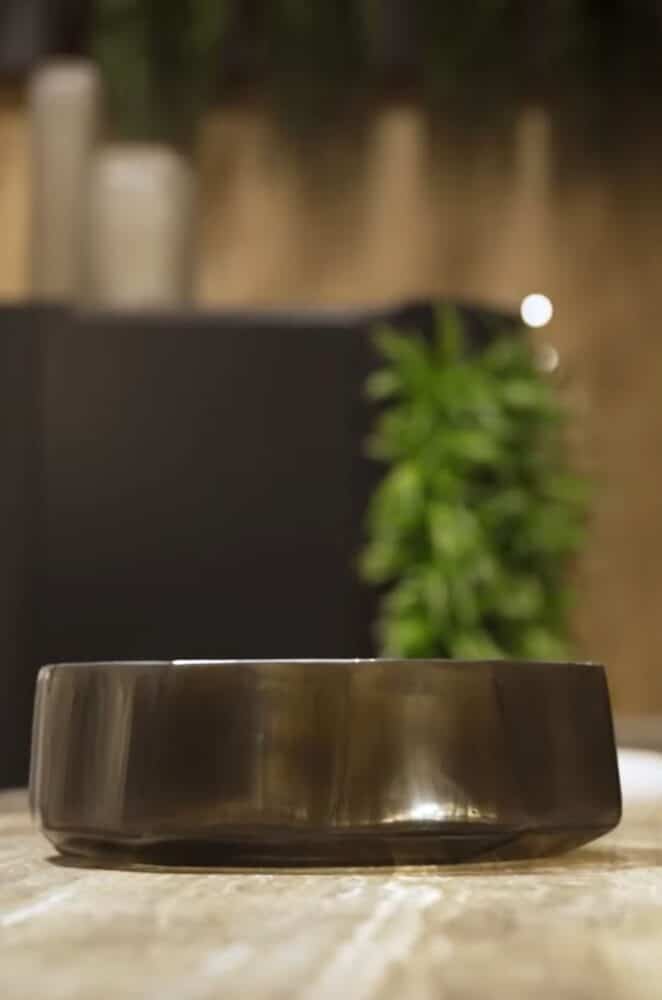
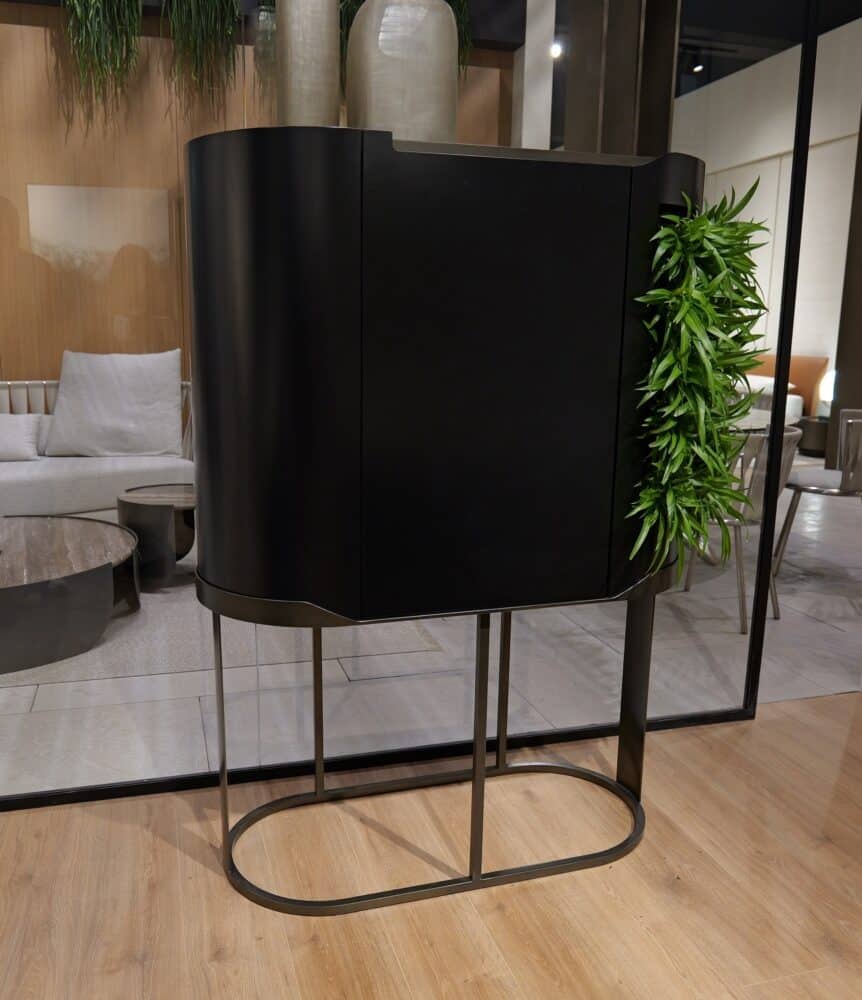
The cabinet’s sleek metal frame with curved side panels and long metal legs ending in a perimeter metal band illustrate Cantori’s signature elegance. This fusion of form and eco-conscious intent shapes its identity. Oasi hence embodies Cantori’s commitment to indoor “vivibility” and mindful living. There, we distinctly felt design transcended utility to nurture a regenerative harmony.
Cadix Solar Lamp: Durable Lighting for a Greener Night
Continuing the innovation, Les Jardins, a French outdoor design stalwart since 1991, brought its Cadix Lamp to Euroluce, showcasing its decades-long focus on sustainable craftsmanship.
Georges Bonichon, General Manager at Les Jardins, introduced the Cadix range, stating:
“These are all-aluminum products with a granite base. They are powerful, intelligent, rechargeable solar luminaires with excellent autonomy.”
The lamp’s hand-welded aluminum mesh frame, crafted with utmost technical precision, prioritizes durability.
“It’s work done by hand at our factory. We have a product that’s very good for marine environments, requiring almost no maintenance,” Bonichon explained.
Available in 50, 70, and 90 cm heights, Cadix comes in white, black, or corten finishes, with custom colors on request, embodying a coastal aesthetic that casts “superb lighting, with beautiful ground effects between shadow and light.”
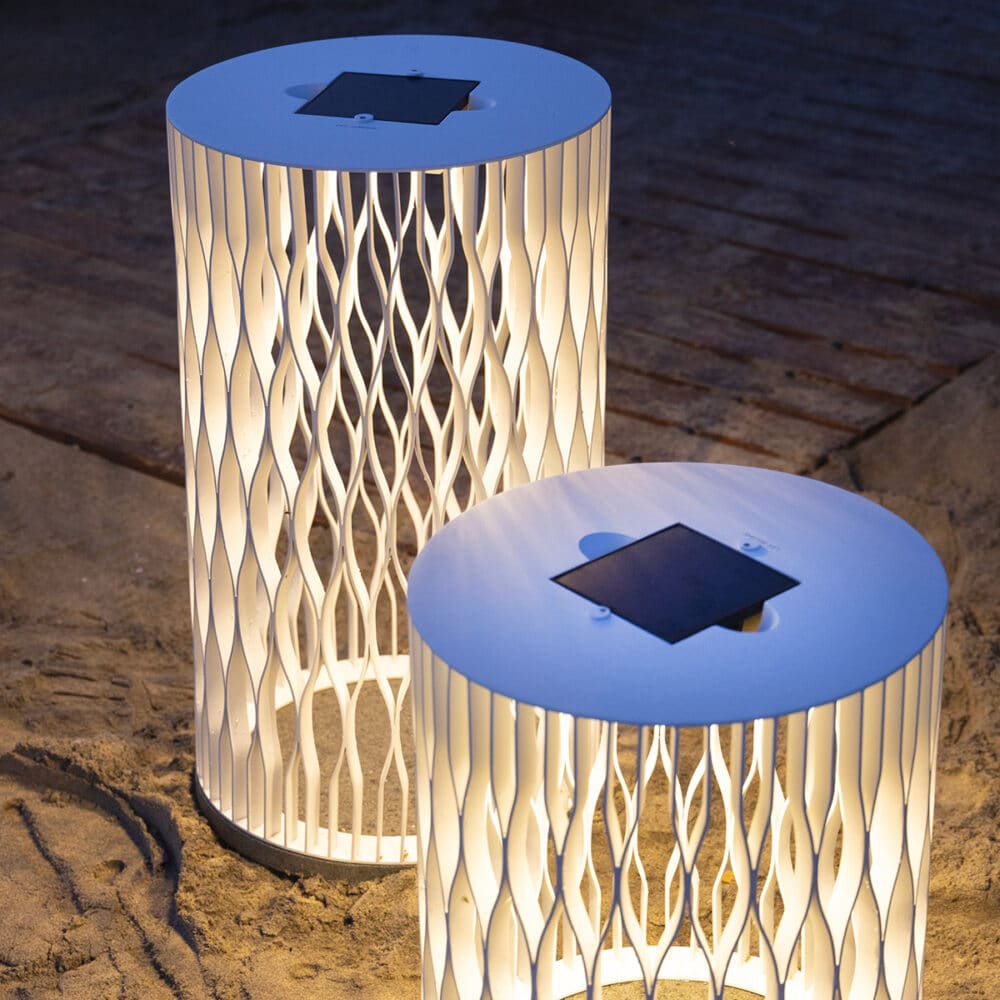
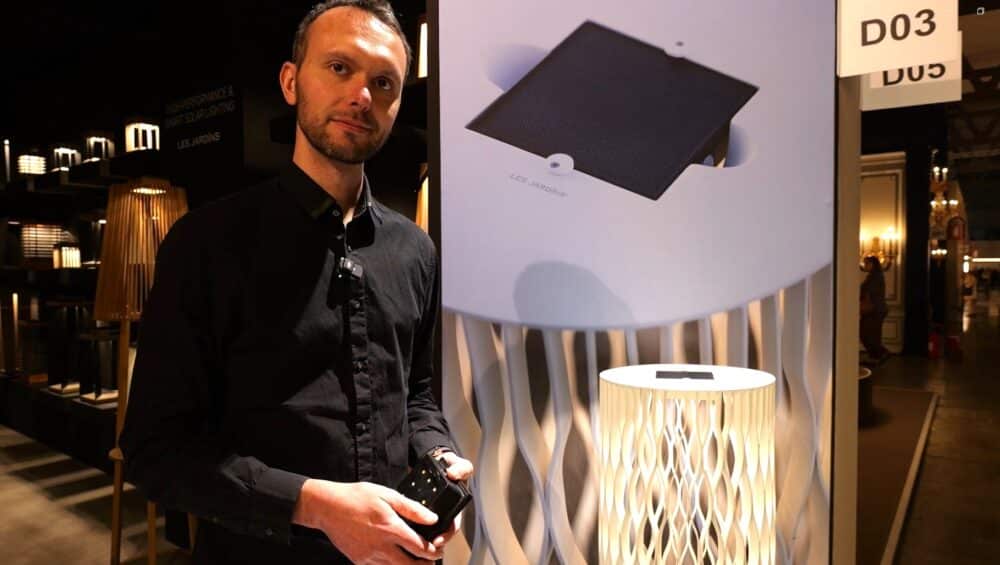
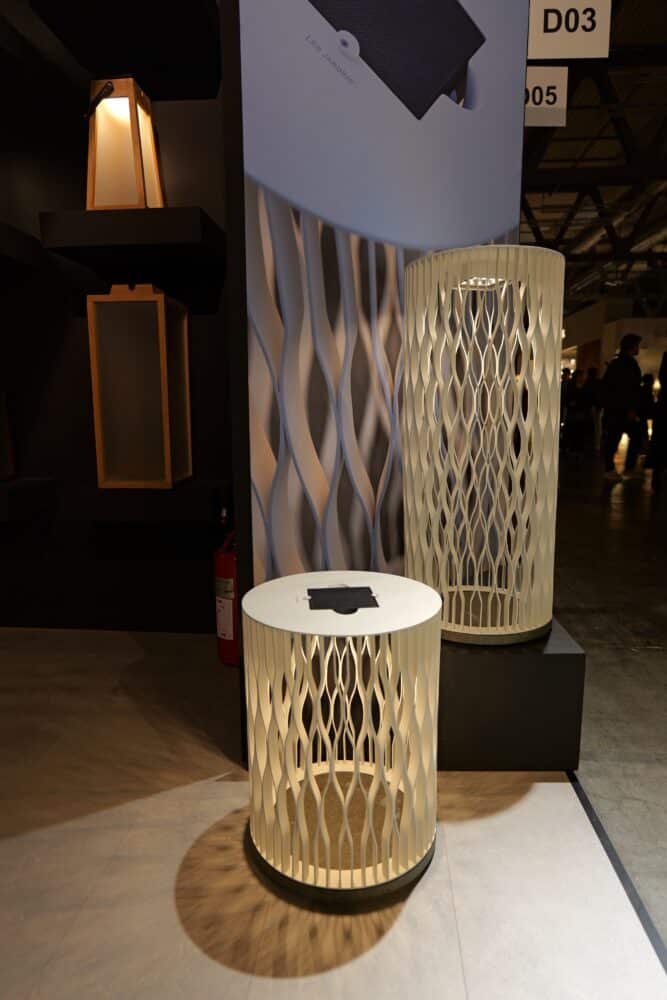
The eco-innovation is expressed in its solar technology. Geofrey Marcel, Solar Technical Manager, detailed:
“We’re on our 500-lumen solar module, equipped with a SunPower solar panel, a motion detector, 3000 Kelvin LEDs—we’re switching to 2700 Kelvin, we can change that on request—and a USB-C port to the latest standards.”
With three modes, including an intelligent setting that “adapts to brightness, weather, keeps a history of recent days, and allows brightness all night, all year,” Cadix ensures versatility all while minimizing its environmental footprint.
Ninety percent of Les Jardins’ products, including Cadix, are designed to be disassembled and repaired, extending lifespan and aligning with the company’s mission to combat overconsumption since their 2013 solar lighting debut.
“We know now for sure that a good lighting project is providing whatever is needed for people to be living better, even from a biological point of view,” Carlo Urbinati, President and CEO of Foscarini and President of Assoluce, shared at the event’s Press Welcome Coffee, capturing the essence of design’s power to transform lives sustainably.
BREATHAIR®: Catalyzing Circular Seating Innovation
Meanwhile, at Salone del Mobile, Arper, the Venetian design leader since 1989, introduced an all-new feature for their Catifa (RE) 46 chair—the BREATHAIR® seat cushion, set to launch by year’s end. We were impressed by this eco-material’s first steps in furniture design, transforming a 2004 classic by Lievore Altherr Molina. This elastic, breathable material is made of recycled plastic filaments that are intertwined. It is fully recyclable and has been shaped for the first time to fit the Catifa (RE) 46’s sleek contours, underscoring Arper’s pioneering work.
Developed by Japan’s TOYOBO in 2018, BREATHAIR®—a 3D network-structured polyester elastomer—debuted in mattresses for the Tokyo 2020 and Paris 2024 Olympics.
“It’s a material that’s been used a lot in mattresses because it exists in rather raw, square formats, and we’ve managed to thermoform it,” Antoine Beaulieu, Arper’s Architect Relations Manager for France, explained.
The cushion complements the chair’s eco-conscious shell, made from 100% recycled plastic—65% post-consumer and 35% post-industrial—available in eight tactile shades.
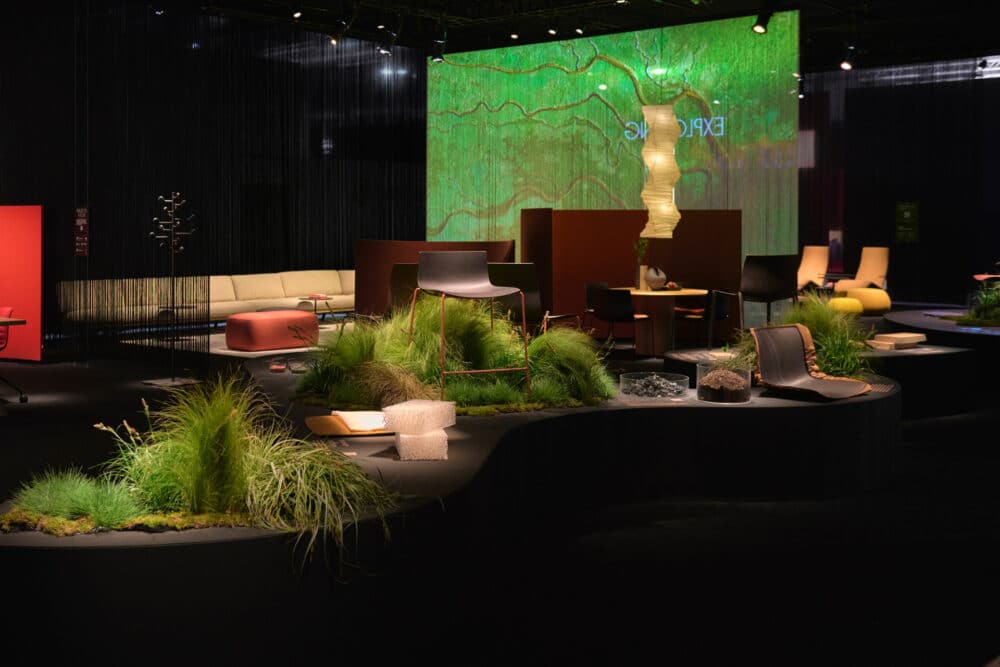

“All our models are practically glue-free, and chairs like Catifa 53 or 46 now don’t use glue between the fabric, foam, and seat,” Beaulieu noted.
Arper’s glue-free mounting ensures easy disassembly and repair, aligning with their broader circular economy goals, from FSC-certified wood to experiments like the PaperShell base for their Catifa Carta chair. This prototype, with a wood-waste shell, shared the stand, hinting at more carbon-negative designs to come.
Arper’s sustainable design ethos is evident in its business model, prioritizing environmental, social, and economic transparency, notably by integrating well-being into its development goals.
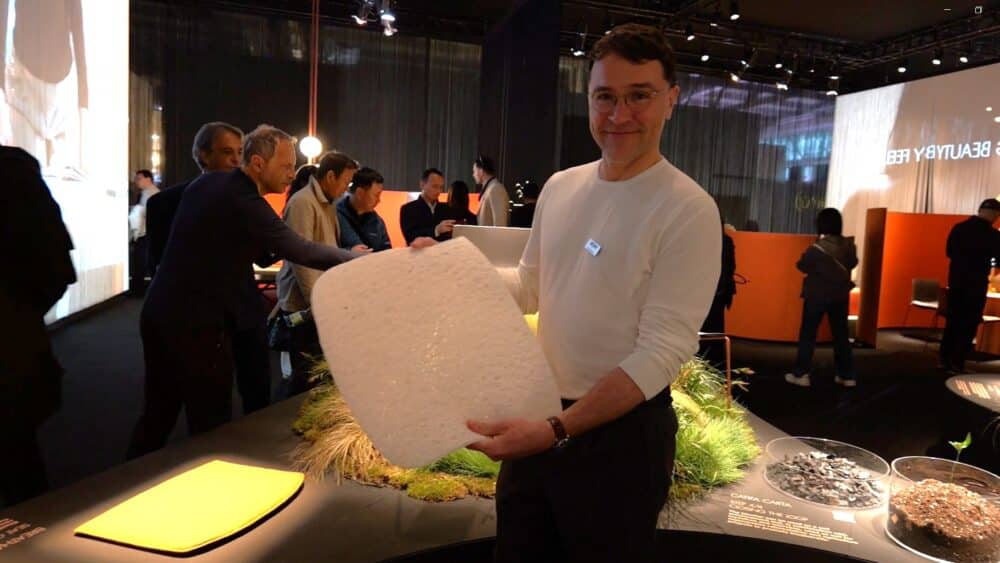

Advancing Design with Purpose
The event was a step forward in a journey already underway, a manifesto for a broader structural change.
Cantori’s Oasi Cabinet cleans the air we breathe, Les Jardins’ Cadix lamp lights our nights sustainably, and Arper’s innovations redefine what the furniture world can achieve. These aren’t outliers; they reflect a sector racing to meet EU’s 2030 goals, where 55% emissions cuts are non-negotiable.
Yet hurdles persist: scaling biotech solutions like Aura’s requires investment, and global recycling systems lag behind ambition. Still, the fair offered a glimpse of what’s possible. Are brands like Cantori, Les Jardins, and Arper setting a new standard? Their technical leaps—air filtration, repairable solar tech, glue-free recyclability—suggest yes.
These innovations demonstrate the potential for design to positively impact the environment and contribute to a more responsible future. As consumers increasingly demand sustainable products, it is encouraging to see leading manufacturers rise to the challenge and prioritize eco-responsibility and life-enhancing design in their collections, going as far as turning waste into art.








